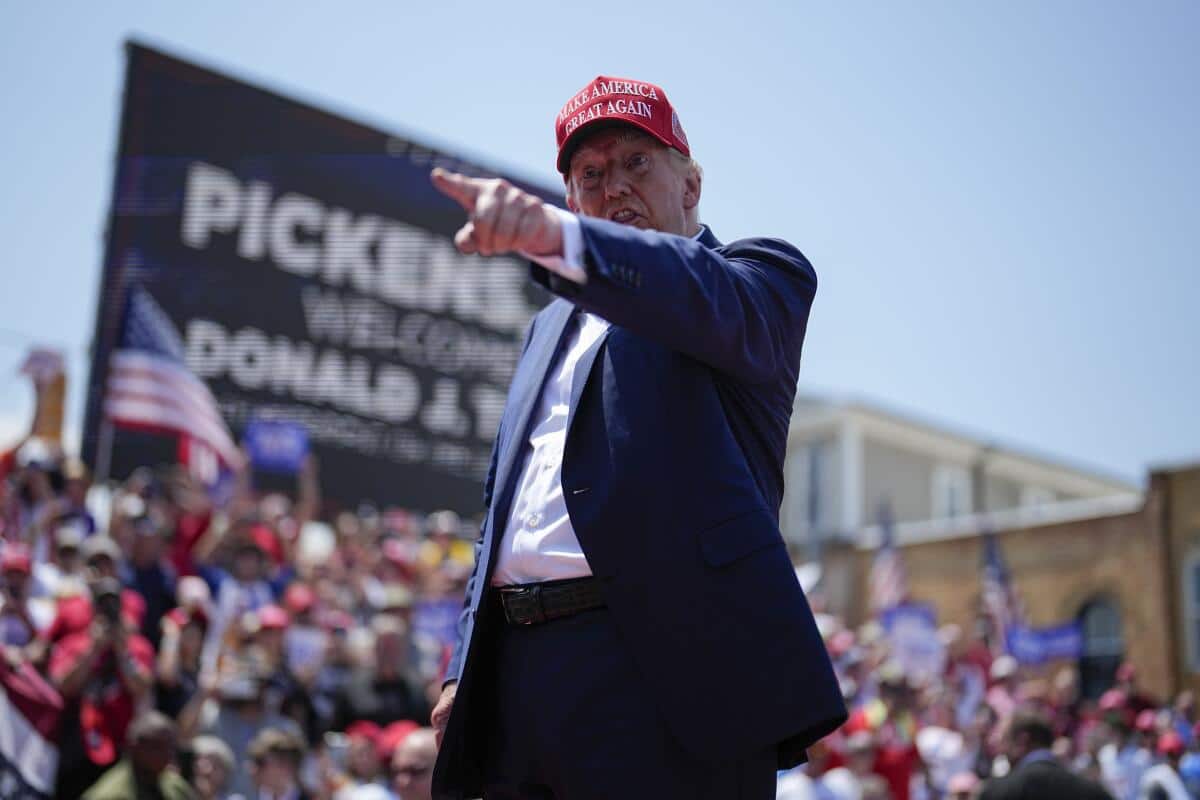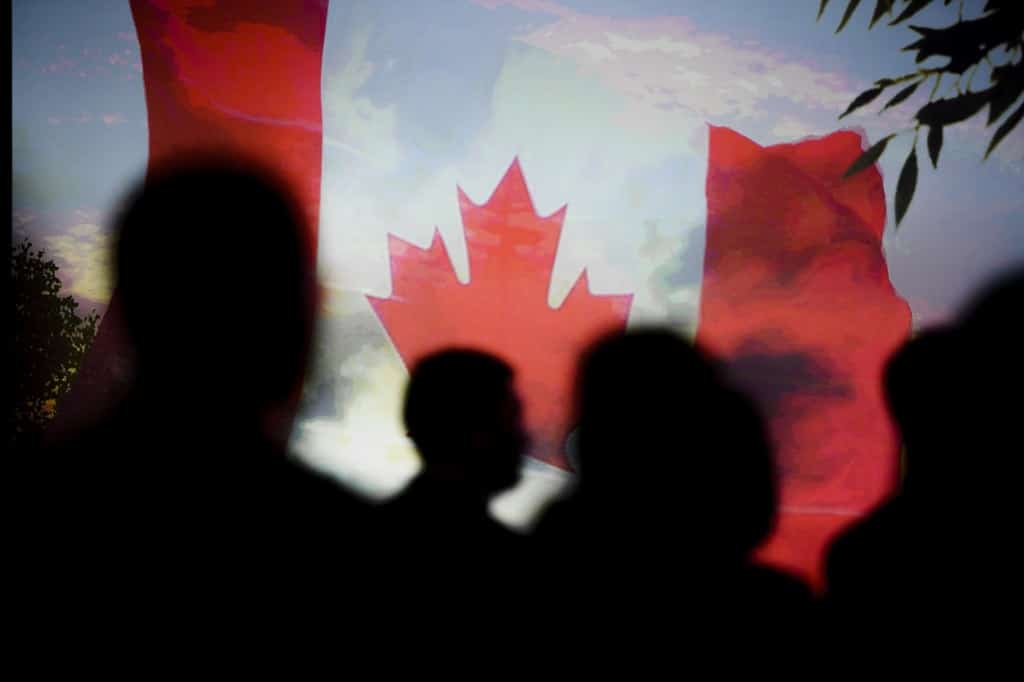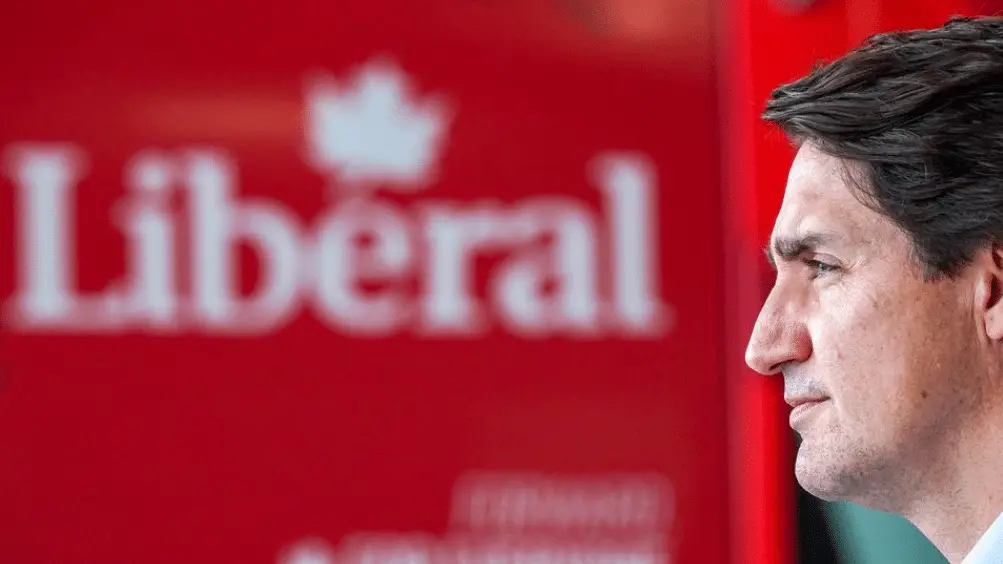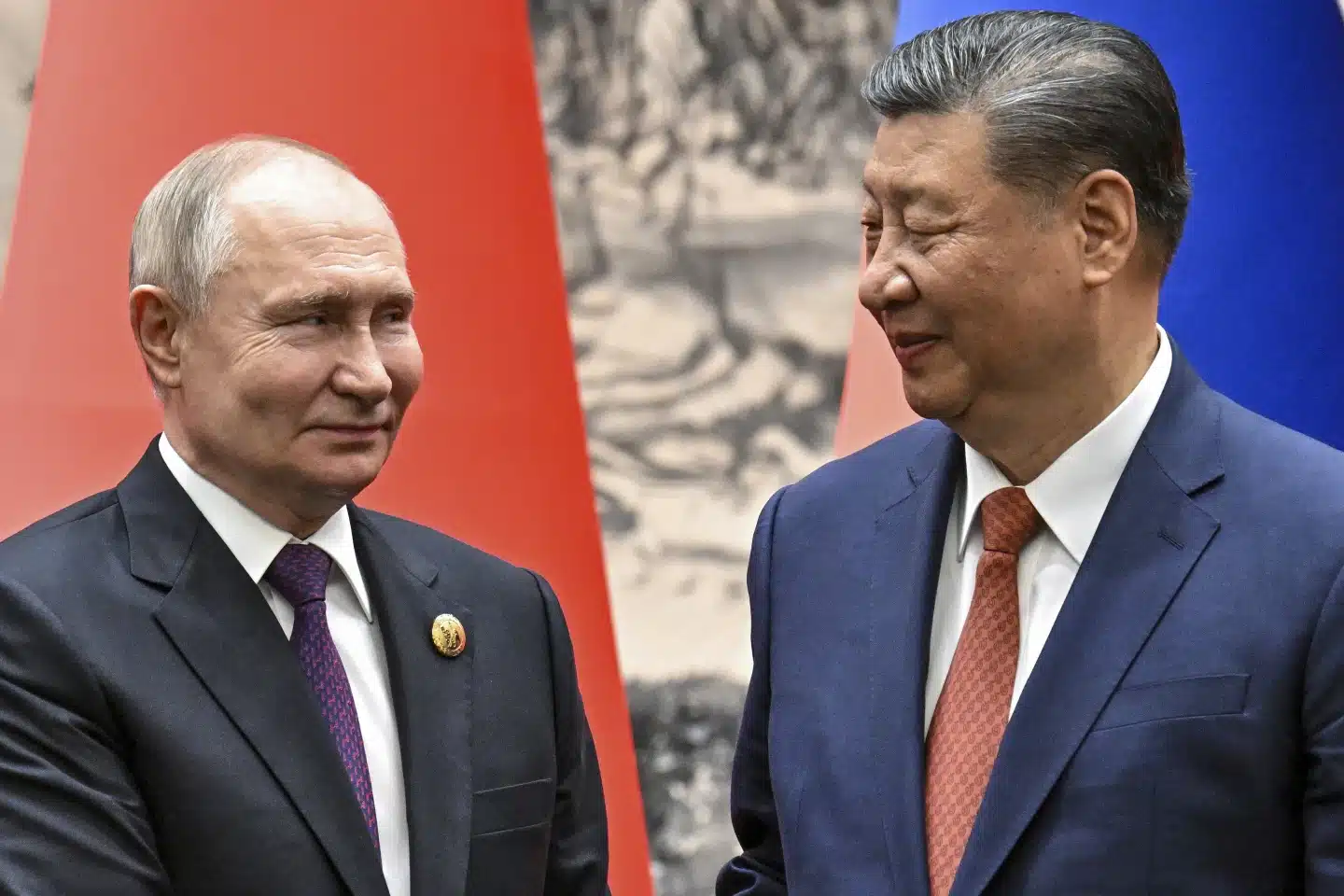Politics
The Elites’ Hatred of Trump and Everyday Americans

American elites’ disdain for Trump and everyday Americans has become a focal point in contemporary political discourse. The deep-rooted hatred displayed by certain echelons of society towards both the former president and his supporters has brought to light the stark divisions within the nation.
From the halls of power to the conversations of ordinary citizens, this polarization has permeated various facets of American life, igniting fervent debates and prompting profound introspection.
The widespread contempt towards Trump and those identifying with his ideals has generated a complex web of emotions, issues, and narratives.
Understanding the dynamics of this enmity requires delving into the underlying causes and implications, shedding light on the multifaceted nature of American society.
As we embark on a quest to unravel the intricacies of this contentious relationship, it becomes imperative to navigate through the layers of resentment and seek a deeper comprehension of the forces at play.
Understanding the Divide
The division between American elites and Donald Trump has been a defining feature of recent political dynamics. The stark contrast in political ideologies has polarized the nation.
Political elites, characterized by their influence, wealth, and establishment connections, have vehemently opposed Trump’s unorthodox approach to governance. Trump’s outsider status and aggressive style clashed with the traditional norms of the political establishment, leading to an enduring conflict.
The disdain from these elites was evident through their public criticisms and opposition to his policies, further perpetuating the division.
Trump’s Relationship with Everyday Americans
In contrast to the political elites, Trump garnered significant support from everyday Americans who felt overlooked and disenfranchised by the establishment. His ability to resonate with their concerns and promises of revitalizing forgotten industries and securing borders struck a chord with many.
This connection with ordinary citizens fueled a loyal following, intensifying the political elites’ animosity. Although Trump’s presidency has ended, this dynamic’s impact continues reverberating in American politics.
The hatred towards Donald Trump from American elites and everyday Americans can be attributed to several factors.
A significant reason behind the disdain for Trump lies in American society’s deep economic and social divide.
Studies have shown that Americans are more divided on social issues than economic matters, and this schism has contributed to a growing sense of polarization.
The widening wealth gap and disparities in opportunities have fueled resentment and discontent among various segments of the population, leading to a prevailing sense of disenfranchisement and alienation.
Another contributing factor to the antipathy towards Trump is rooted in policy disagreements and rhetoric. Political discourse in the U.S. has become increasingly contentious, marked by negative tones and polarizing language.
The heightened use of conflict rhetoric has shaped public opinion and exacerbated divisions, influencing perceptions of political leaders. Trump’s approach to policymaking and rhetoric has been particularly divisive, resonating strongly with some while alienating others.
The intense scrutiny and coverage of Trump
Furthermore, the portrayal of Trump in the media and its impact on public perception has played a pivotal role in changing attitudes towards the former president. The intense scrutiny and coverage of Trump’s presidency and his adversarial relationship with the media have influenced public trust and confidence.
Trump’s unique and aggressive approach towards the media has sparked debates about journalistic integrity and the role of the press in a polarized environment.
The evolving dynamics of news coverage and its influence on public opinion have been the subject of extensive analysis, shedding light on the changing landscape of media and its implications for political figures.
These intertwined factors have contributed to the complex tapestry of disdain and disapproval directed towards Donald Trump, reflecting the multifaceted nature of political attitudes in contemporary American society.
The presidency of Donald Trump has significantly impacted American society, leading to widespread polarization and division, erosion of trust in institutions, shifts in the political landscape and the rise of populist movements.
The Trump presidency intensified the existing political polarization in the United States. The sharp divisions between supporters and critics of Trump deepened, leading to increased ideological and partisan conflicts.
This polarization affected political discourse and permeated various societal aspects, contributing to a polarized public. Political research and media reports have widely discussed the intensification of polarization during Trump’s tenure.
Public Trust in American institutions
According to studies from the Pew Research Center, the overall share of Americans expressing right-wing or left-wing opinions doubled over the past two decades, indicating a significant shift in the political landscape.
The Trump presidency also witnessed a decline in public trust in American institutions. Confidence in key institutions reached a new low as Americans voiced increased scepticism and dissatisfaction with governmental and institutional accountability.
This erosion of trust in institutions has long-lasting implications for societal cohesiveness and civic engagement.
Research from the Gallup Poll shows that Americans’ confidence in institutions has been dropping for most of the past 15 years, with trust hitting a new low during Trump’s presidency.
This decline in trust reflects a broader trend of diminishing confidence in institutional integrity and performance.
The rise of populism, characterized by an emphasis on the concerns of ordinary people against elites, gained prominence during Trump’s presidency, reshaping the political discourse and mobilizing new segments of the electorate.
Analyzing the surge in populist movements, political scientists from Stanford University underscore the evolution of populist messages in contemporary politics and their influence on broader political movements.
The historical analysis of populism in the United States indicates its profound impact on American politics and the evolution of populist ideologies.
American elites” and everyday citizens
The multifaceted impact of Trump’s presidency on American society underscores the need for comprehensive examination and understanding of its repercussions, shaping the course of future political and societal developments.
As the nation seeks to move forward from its current state of division, it is essential to consider how “American elites.” and everyday citizens can bridge the gap and find common ground.
One approach to fostering unity involves rebuilding trust and promoting a sense of shared purpose. Additionally, leadership and effective communication are pivotal in shaping the path forward for American society and politics.
Bridging the gap between American elites and everyday citizens requires open dialogue, mutual respect, and a commitment to upholding the fundamental values that bind the nation together.
By acknowledging and understanding differing perspectives, both groups can work towards finding common ground on various issues, fostering a sense of shared identity and purpose. Resources such as American Governance: The Way Forward can provide valuable insights into strategies for collaboration and unity.
Rebuilding trust in American society is crucial for healing the emerging divisions. This process involves acknowledging past grievances, addressing systemic issues, and creating platforms for constructive engagement.
It also calls for proactive steps to restore trust across government, business, and civic institutions, as highlighted in resources such as “Six Ways to Repair Declining Social Trust”. The nation can move forward with a renewed sense of unity and purpose by rebuilding trust.
Effective Leadership and Communication
Effective leadership and communication play a key role in shaping the way forward for American politics. Leaders are responsible for using governmental resources and communication channels to protect their constituents, as outlined in “U.S. Political Leadership and Crisis Communication During…”.
Furthermore, political leaders must have excellent communication skills to inspire, motivate, and negotiate with people and groups, as discussed in “What is Political Leadership and Communication?”.
By harnessing the power of effective leadership and communication, the nation can chart a path towards a more united and inclusive future.
Navigating the rift between American elites, the political establishment, and everyday Americans requires a nuanced approach that acknowledges the legitimacy of diverse perspectives. By fostering constructive dialogue and seeking common ground, there is the potential to bridge the chasm currently dividing the nation.
As we forge ahead, it is imperative to critically assess the ramifications of this divide and work towards reconciliation. Understanding the multifaceted nature of these issues is crucial in charting a path towards unity, ensuring that the voices of all Americans are heard and valued in shaping the nation’s future.
By Geoff Thomas
Politics
Canada’s Population Explosion Under Trudeau Triggers Housing Shortage

The Trudeau government declared on March 21, 2024, that it would accept fewer temporary residents due to the difficulty of assimilating so many newcomers so quickly. However, population growth appears to be accelerating in 2024.
Statistics Canada’s Labour Force Survey, the population aged 15 and over increased by approximately 411,000 in the first four months of the year, representing a than 50% increase over the four-month growth in early 2023.
This new acceleration was the focus of a recent research paper by Stéfane Marion, chief economist at the National Bank of Canada. “The demographic shock is getting worse in Canada,” he told Canada’s Globe and Mail.
Canada is seeing its strongest population expansion in decades, thanks almost exclusively to foreign migration, which includes the entrance of temporary workers and students. The population increased by about 1.3 million last year, or 3.2%, the fastest rate since the late 1950s.
Every month, tens of thousands of households participate in Statistics Canada’s labour survey. While the government includes population data in its monthly jobs report, they are not official estimates. Statscan publishes a different population report on a quarterly basis; the next edition is due June 19.
Nonetheless, these data indicate that Canada’s economy has remained strong to begin the year, which could complicate the federal government’s efforts to limit migration.
For the first time, the Trudeau government will impose limits on temporary residents beginning this fall. The government aims to reduce this group to 5% of the total population during the next three years; at latest count, they accounted for 6.5%.
Given those plans, “it would seem that many people have decided to come to Canada earlier,” Mr. Marion said, stressing that housing affordability may worsen in the short term.
Several analysts have predicted that Canada’s population growth will eventually decrease to approximately 1% when these new laws take effect.
Housing Affordability in Canada
Meanwhile, Stéfane Marion fears that housing affordability difficulties will increase amid another surge in immigration numbers.
“Demographic shock is worsening in Canada. The working-age population (aged 15 and over) increased by more than 100,000 in April, bringing the total to more than 410,000 after four months in 2024.
According to today’s Hot Chart, this is a significant acceleration (+47%) above the 278,000 increase seen in the first four months of 2023. Greater Toronto, where population growth hit a record 107,000 at the start of the year, has accelerated by 66% compared to 2023.
Greater Montreal and Greater Vancouver have not lagged behind since the beginning of 2024, with growth more than doubling that recorded in 2023.
With Canada’s Minister of Immigration, Refugees, and Citizenship, Marc Miller, announcing plans to curb immigration in 2025, it appears that many people have decided to come to Canada sooner.
Housing affordability issues could increase in the coming quarters, as we approach another record year of population growth.
RBC indicates a loss of affordability in Canada
RBC’s aggregate affordability score for Canada increased by 2.8 percentage points to 62.5% as mortgage rates rose and property prices rose somewhat. (An increase in the measure indicates a loss of affordability.) This reversed a little improvement in the second quarter.
The issue is particularly acute in Vancouver, Victoria, and Toronto, where property ownership is extremely expensive. Ottawa, Montreal, and Halifax also confront difficult affordability issues.
Last quarter, purchasers’ already bad situation deteriorated even further. A typical household required to set aside an additional 4.4 percentage points of its income to afford the costs of owning an average home at current prices and interest rates.
In fact, the entire income of that (median) household was insufficient, with RBC’s aggregate affordability metric coming in at an amazing 102.6%. The only practical choice for most ordinary consumers remains a less expensive condo apartment, which is still out of reach for many.
Home purchase activity has cooled again after unexpectedly rebounding last spring. Furthermore, prices are beginning to fall from their summer highs. In the face of significant affordability pressures, we believe the downward trend may accelerate in the near term.
Keywords: Canada News, Canada Population
Politics
Trudeau Liberals Electoral Chances are as Good as Dead

Justin Trudeau’s Liberal Party’s popularity has plummeted to record lows in recent polls. Scandals and his carbon tax weakened Trudeau’s support after years of support. Many election Analysts belive Justin Trudeau and his Liberals will not survive the next election.
The newest Angus Reid survey shows the Conservatives leading nationwide, with Trudeau and his Liberals losing support in most provinces, especially Ontario and Quebec. Analysts say Trudeau’s leadership fatigue, unhappiness over inflation, ridiculous carbon tax, and continual policy flip-flopping are driving voters away.
Trudeau’s carbon tax is unpopular across Canada. Many Canadians hate its higher prices for homes and businesses.
Critics say it unfairly targets energy, threatening jobs and prosperity. Skeptics believe the tax fails to solve global climate challenges despite claims it will reduce emissions.
Provincial governments like Alberta passionately oppose federal intrusion. The carbon tax still divides society.
Steven Guilbeault, Trudeau’s Environment and Climate Change Minister, has lost support from neutral public and provincial governments and the powerful climate action lobby.
Don Braid of the Calgary Herald says Chickens with their heads cut off run around in circles. In politics, the federal Liberals are starting to exhibit this postmortem behaviour.
Environment and Climate Change Minister Steven Guilbeault, the core cabinet fowl who said no new roads should be built in Canada, continues to press his climate extremism.
“The result is political fiasco.”
Alberta and Saskatchewan have always been bitterly opposed to many measures. But Guilbeault is now losing support from the public, provincial governments that once were at least neutral and, crucially, the powerful climate action lobby.
The disasters are self-inflicted. Trudeau and Guilbeault stuck to the carbon tax even after the policy’s disastrous deflation by the “carve out” for home heating oil, a benefit mainly to Atlantic Canada.
Their faux-tough response — nobody else gets that, dammit! — actually cost farmers a break that had been planned, but suddenly looked like another exemption.
The carbon tax, revealed as a purely political tool, is ripe for axing by a potential new leader like Mark Carney. Even New Democrats have argued that the tax should exit, stage left.
Now, Guilbeault has introduced amendments to the Impact Assessment Act, allegedly bringing it into line with the Supreme Court ruling that found the law seriously intrudes on powers rightly belonging to the provinces.
Trudeau’s power grabs shot down
Guilbeault has never acknowledged this was a defeat. He treats the ruling as a simple policy problem rather than a 5-2 thumping by judges not usually known for hostility to federal power grabs.
Alberta was predictably furious about the amendments. Premier Danielle Smith always said Guilbeault would make a gesture and proceed as usual, forcing yet another court challenge.
“When you look at the unconstitutionality of the first draft, you can’t just make tweaks and bring this in line with the Constitution,” says Rebecca Schulz, Alberta’s minister for environment and protected areas.
“That’s really the issue here. Minister Guilbeault still has the ability to involve himself in projects that are within provincial jurisdiction.
“In the end, this piece of legislation remains unconstitutional. We are going to be taking this back to court and I’m confident in our position, because their changes don’t actually address the issues that we’ve raised.”
Trudeau’s middle ground game not working
The Impact Assessment Agency, the powerful regulatory body that oversees all this, said in a statement: “No decisions to designate projects will be taken. Consideration of any new designation requests will only resume, as appropriate, once amended legislation is in force.”
Most striking is the fury from the climate action lobby toward Guilbeault’s amendments.
“Overall, the bill is a complete federal abdication to address proposed high-carbon projects such as in situ oil mines,” Steven Hazell, a retired environment lawyer and federal regulator told the National Observer, Canada’s best chronicler of climate stories and policy.
Green party Leader Elizabeth May said the government was “erring on the side of stupidity.” May sees the court decision as an opportunity to go further with legislation, not retreat to meet demands of provincial jurisdiction.
World
China And Russia Reaffirm Their Close Ties As Moscow Presses Its Offensive In Ukraine

BEIJING — On Thursday, Russian President Vladimir Putin and Chinese President Xi Jinping reiterated their “no-limits” friendship, which has expanded as both countries face mounting tensions with the West, and blasted US military deployments in Asia and the Pacific.
At their summit in Beijing, Putin hailed Xi for China’s recommendations to settle the conflict in Ukraine, which Ukraine and its Western allies have rejected as mostly adopting the Kremlin’s line.
Putin’s two-day state visit to one of his biggest allies and commercial partners comes as Russian forces launch an operation in northeastern Ukraine’s Kharkiv region, marking the most serious border incursion since the full-scale invasion began on February 24, 2022.
China claims to be impartial in the crisis, but it has supported the Kremlin’s accusations that the West led Russia into attacking Ukraine, and it continues to supply vital components required by Moscow for weapons manufacture.
Russian President Vladimir Putin and Chinese President Xi Jinping: Image AP
China And Russia Reaffirm Their Close Ties As Moscow Presses Its Offensive In Ukraine
China, which has not condemned the invasion, suggested a broad-based peace plan in 2023, calling for a cease-fire and direct talks between Moscow and Kyiv. Both Ukraine and the West rejected the idea because it did not call on Russia to vacate Ukraine’s occupied territories.
China also lent a verbal nod to Russia’s narrative about Nazism in Ukraine, with a joint statement issued Thursday saying Moscow and Beijing should protect the post-World War II order and “severely condemn the glorification of or even attempts to revive Nazism and militarism.”
Putin has claimed the “denazification” of Ukraine as a primary purpose of the military action, falsely referring to Ukrainian President Volodymyr Zelenskyy’s government as neo-Nazis.
The mostly symbolic and ceremonial visit emphasized cooperation between two countries facing challenges in their relations with the United States and Europe.
“Both sides want to show that despite what is happening globally, despite the pressure that both sides are facing from the U.S., both sides are not about to turn their backs on each other anytime soon,” said Hoo Tiang Boon, a Chinese foreign policy researcher at Singapore’s Nanyang Technological University.
While Putin and Xi stated they wanted to stop the war, they made no new ideas in their public remarks.
“China hopes for the early return of Europe to peace and stability and will continue to play a constructive role toward this,” Xi said in prepared remarks to the media in Beijing’s Great Hall of the People. His statements echoed China’s overarching peace initiative.
Earlier in the day, Putin was greeted in Tiananmen Square with military fanfare and cannon fire.
On the eve of his visit, Putin stated that China’s proposal may “lay the groundwork for a political and diplomatic process that would take Russia’s security concerns into account and contribute to achieving long-term and sustainable peace.”
Zelenskyy has stated that any negotiations must entail the restoration of Ukraine’s territorial integrity, the departure of Russian soldiers, the release of all captives, a tribunal for those responsible for the assault, and security assurances for Ukraine.
Putin Speaks: AP Image
China And Russia Reaffirm Their Close Ties As Moscow Presses Its Offensive In Ukraine
Putin said he would brief Xi on the situation in Ukraine, adding, “We appreciate the initiative of our Chinese colleagues and friends to regulate the situation.”
Following Russia’s latest attack in Ukraine last week, the war has reached a crucial point as Ukraine’s depleted military awaits new supplies of anti-aircraft missiles and artillery rounds from the United States, which have been delayed for months.
China and Russia’s joint statement also harshly slammed US foreign policy, citing US-formed alliances as having a “Cold War mentality.”
“Both sides expressed serious concern about the consequences caused to the strategic stability of the Asia-Pacific region by AUKUS,” according to the statement, referring to the acronym for Australia, the United Kingdom, and the United States.
China and Russia have accused the United States of installing land-based intermediate-range missile systems in the Asia-Pacific region under the guise of joint drills with allies. They claimed that the United States’ operations in Asia were “changing the balance of power” and “endangering the security of all countries in the region.”
The united declaration underscored China’s support for Russia.
“There’s so much Chinese falling over themselves to give Russia face and respect without saying anything specific, or committing to anything,” said Susan Thornton, a former diplomat and senior fellow at Yale Law School’s Paul Tsai China Center.
The meeting was another endorsement of China and Russia’s amicable “no limits” friendship, which they signed in 2022, just before Moscow invaded Ukraine.
Since then, Russia has been increasingly economically dependent on China since Western sanctions have limited its access to most of the global commercial system. China’s expanding commerce with Russia, which reached $240 billion last year, has helped the country buffer some of the worst effects of sanctions.
Moscow has transferred most of its energy exports to China and relied on Chinese enterprises to purchase high-tech components for Russian defense sectors to avoid Western sanctions.
Russian President Vladimir Putin and Chinese President Xi Jinping: Image AP
China And Russia Reaffirm Their Close Ties As Moscow Presses Its Offensive In Ukraine
“I and President Putin agree we should actively look for convergence points of the interests of both countries, to develop each’s advantages, and deepen integration of interests, realizing each others’ achievements,” added Xi.
Xi congratulated Putin on the start of his fifth term in office and commemorated the 75th anniversary of diplomatic relations between the former Soviet Union and the People’s Republic of China, which were formed after a civil war in 1949. In the March election, Putin eliminated all significant political opponents and faced no serious threat. He, like Xi, has not spelled out a succession strategy.
“In a famous song of that time, 75 years ago — it is still performed today — there is a phrase that has become a catchphrase: ‘Russians and Chinese are brothers forever,'” Putin stated.
During the war, Russia and China expanded their military ties. In recent years, they have conducted several cooperative war simulations, including naval drills and long-range bomber patrols over the Sea of Japan and the East China Sea. Russian and Chinese ground forces have also moved to the other country’s territory to conduct joint training.
China continues to be a major market for Russian military hardware, while the country’s defense industry is rapidly developing, including the production of aircraft carriers and nuclear submarines.
Putin has already stated that Russia has shared highly sensitive military technologies with China, considerably improving its defense strength.
SOURCE -(AP)
-
News5 months ago
The Rise of Woke Ideology in Western Culture
-
Learning6 days ago
Exploring TVA Nouvelles Quebec’s Premier News Source
-
Tech4 months ago
YouTube Slowdown: The Culprit Might be Adblock Plus
-
Entertainment5 months ago
Glynis Johns, ‘Mary Poppins’ Star Who First Sang Sondheim’s ‘Send In The Clowns,’ Dies At 100
-
U.K News5 months ago
About 300 Indian Travelers Are Stuck In A French Airport In A Human Trafficking Probe
-
Business5 months ago
What Went Wrong At Smile Direct Club?












































